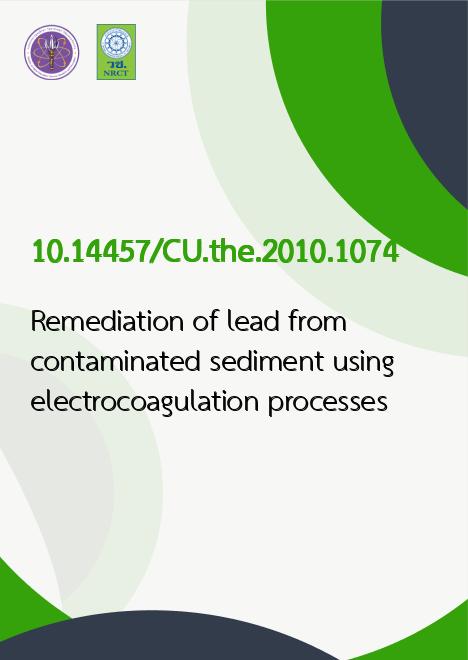
|
Remediation of lead from contaminated sediment using electrocoagulation processes |
|---|---|
| รหัสดีโอไอ | |
| Title | Remediation of lead from contaminated sediment using electrocoagulation processes |
| Creator | Karnjana Lokkumlue |
| Contributor | Thidarat Bunsri |
| Publisher | Chulalongkorn University |
| Publication Year | 2553 |
| Keyword | Contaminated sediments, Water -- Pollution, Lead, Lead abatement, Water -- Purification -- Lead removal, Electrocoagulation |
| Abstract | Lead (Pb) contamination in sediments and water could pose a serious problem to human health and sustainability of food. The main purpose of this study was to apply the electrocoagulation (EC) process to remediate Pb from both of sediment and water. The optimum conditions and the kinetic rate constant were determined to define a set of design criteria for enhancing EC process and to evaluate the stability of lead in treated sludge. The sediment slurry used in this study was collected from Klity creek, Kanchanaburi, Thailand. The sediments contained a high concentration of Pb that was 21,833 mg/kg. The borosilicate beaker with a working capacity of 1.0 L was used as the EC batch reactor. The five metal sheet electrodes were arranged in bipolar mode at the centre of reactor. Two types of electrode: aluminium and mild steel with a dimension of 140×50×3 mm were employed in this study. The key parameters in Pb removing efficiency using electrocoagulation were including of mass transfer, form of coagulants and the reaction between Pb and coagulants. The equilibrium of Pb hydrolysis was achieved within 50 minutes. The electrocoagulation with Al electrode could be enhanced if the mono meric of was generated at pH of 6.1. When the system was supplied with 10, 20 and 30mA of DC power, the rate constants were 0.37, 0.99 and 1.26 L/mg-min, respectively. Most of Pb was remained in sludge as inert Pb. With Fe electrode, if the favoured monomeric of was generated at pH of 8, the optimum condition could be earned. The Fe2+ coagulants yielded in this study was quickly transformed to Fe2O3 that was highly stable. The reaction between Fe coagulant and Pb was assumed to be sweep coagulation as the rust dense floc could cover the Pb. Therefore the inert Pb was obtained. In economic aspect, the electrocoagulation with Fe and Al electrodes could be invested when the price of drinking water was higher than 0.5 and 3.1 THB/L, respectively. |
| URL Website | cuir.car.chula.ac.th |